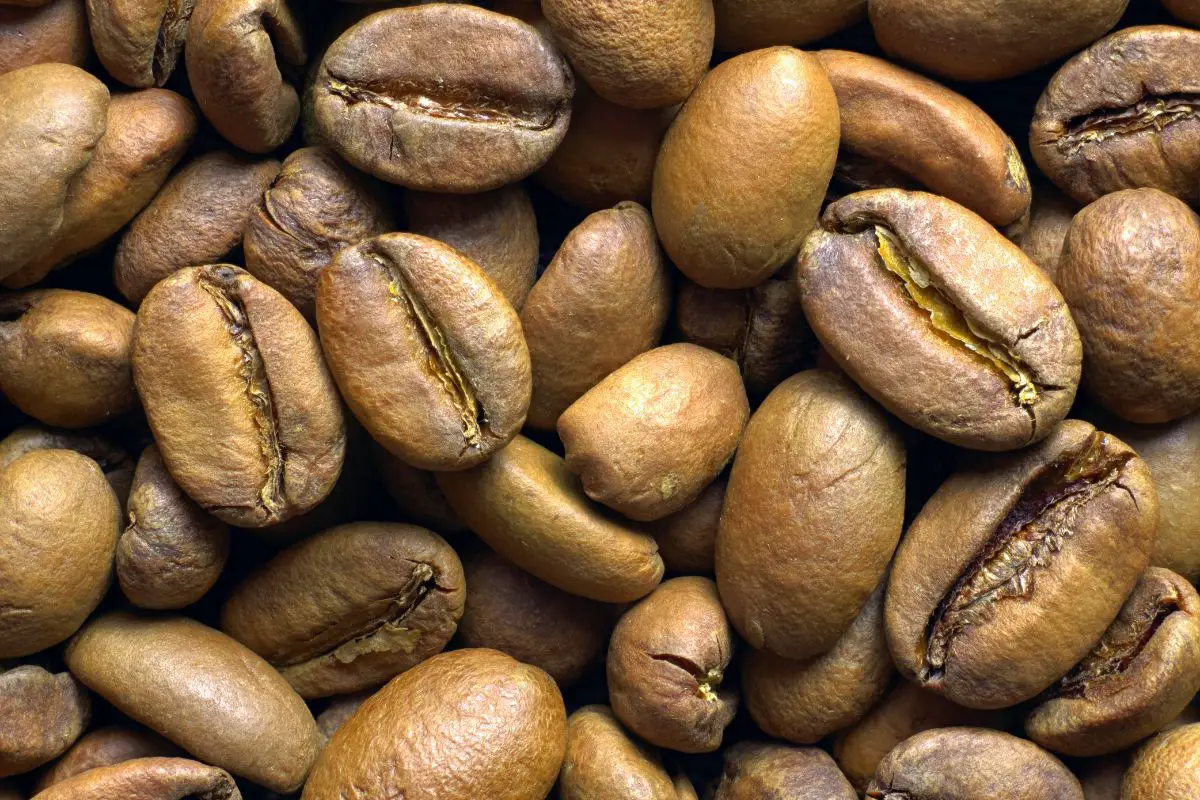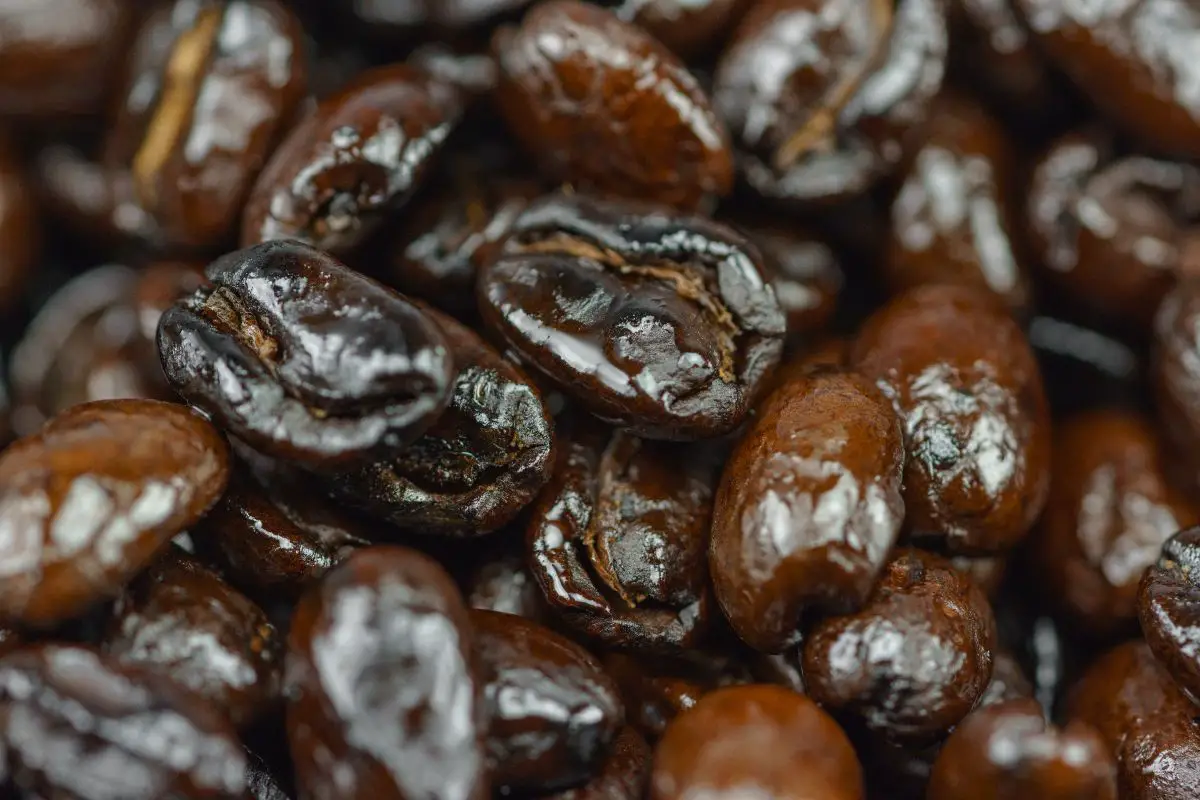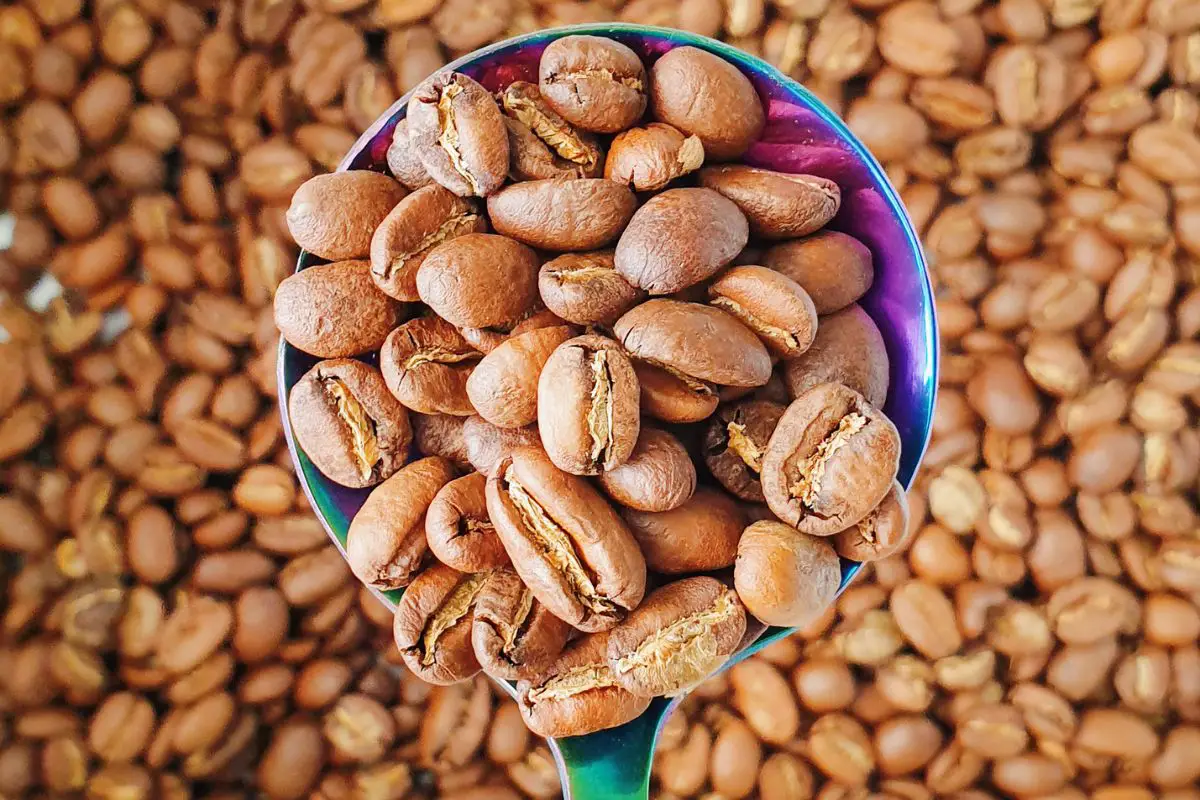Have you ever opened a bag of coffee beans and found the beans all greasy and shiny? If you had experienced this once or multiple times, you would have wondered why those beans are that way when other ones you’ve seen or used always look dry.
Are They Not Fit For Consumption? Are They Stale? Were They Not Roasted Properly?
Well, this article would be answering your questions concerning why some coffee beans are oily while some are not, which coffee beans are oily, which coffee beans are not, and how to make use of either bean.

Oily Coffee Beans
When coffee beans are just harvested from coffee cherries, they are full of sugars and juice while maintaining their natural green colour. After harvesting, these coffee beans get dried up.
When this happens, a reasonable amount of moisture evaporates, leaving just the sugars and oils. The coffee bean oil contains most of the flavour and caffeine inside the bean.
Coffee oil remains in the seeds until it passes through the roasting stage. At the roasting stage, the bean shell cracks due to the heat pressure, which then makes the coffee oil oxidise in the surrounding air.
This oil reacts to oxygen and changes the flavour complexity of these oils. The amount of oil oxidised depends on the duration of time it takes to roast the beans and also the amount of oil the bean naturally has.
All coffee beans have oil, but coffee beans with more oil are usually darker due to roasting time, weigh more, and sometimes have bolder flavour.
Why Do Coffee Beans Get Oily
If your coffee beans have an oily coating, the reason could be;
1. Naturally Oily Beans
When coffee beans that are oily first get roasted, they do have a coating of oil. The layer disappears as time goes on when the beans dry out and get old.
2. Roasting Duration
Usually, roasting squeezes oil off beans; the longer the roasting time, the more fat the beans secrete. That is why dark, freshly roasted beans always have a shiny oil coating. However, some beans will never produce much oil, even if you leave them for a longer duration, while some beans will always have a shiny coat no matter how short the roasting time is.
3. Bean Age
When you leave coffee beans on the shelf for about a week or two, they slowly begin to secrete oil. However, the coating starts to evaporate after a few more weeks.
Which Coffee Beans are Oily

As it has been established, roasting is a significant factor in how much oil a bean secretes. This is so because as coffee beans roast, they release more oils. The darker the coffee bean roast, the more oil you get from them.
Therefore, very dark roasts with dark brown colour will be extremely oily.
However, some dark roasts do not turn out oily if adequately stored, still fresh, and of good quality. Examples of these are; Peet’s Coffee French Roast Whole Bean and Death Wish Organic Whole Bean Coffee
Which Coffee Beans are Not Oily

Naturally, light or medium roast coffee beans are not oily. All you have to do is make sure you are getting highly fresh ones. So, do not only prioritise getting lightly roasted coffee because you want to avoid oily beans but also be sure of the quality and freshness. A great example of one of the best dry coffee beans of high quality is Kicking Horse Hola Whole Bean and some others.
How to Dry Oily Coffee Beans
It is somewhat impossible to prevent coffee beans from being oily; it is a natural process. So you cannot wash the oil away nor air it out. You’ll only end up with a bland or more oily coffee.
However, you can try the following methods;
-
Transfer
You can transfer your beans to a dry and dark environment to get them dried.
Oxidation occurs due to air, so transferring your beans to airtight containers will prevent them from getting more oilier than necessary.
Next, you transfer them into oil-absorbing materials like salt or cornstarch. In that airtight container, fill its base with salt or cornstarch, place your beans evenly, and then cover the top with salt again.
After an hour, check if the salt has become greasy. If it has, the oil has been absorbed from the beans. Toss your beans in another bowl to remove salt residue.
You can repeat this process until the beans are dried to your satisfaction.
-
Paper Absorbent
Another option to dry oily beans is the use of tissue paper or paper towels to pat dry.
You start by placing your beans in a dark place, cut two or three layers of tissue on a plane surface, spread your coffee beans on it, and then cover with two or more layers of tissue again.
Pat the beans with your hands until the paper turns greasy. Replace the paper towels until they no longer turn greasy. There, you have your dry beans.
Are Oily Coffee Beans Bad for The Grinder?
One of the problems that can arise with your grinder is when it comes into contact with oily coffee beans. There’s no way you won’t grind your beans before brewing, and unfortunately, the oil in coffee beans can clog your grinder when it leaves a residue, which may, in turn, render it unusable.
If you are using an Automatic Espresso machine, oily coffee beans should not go near it at all; Burr grinders are safer options because they come apart quickly and are also more convenient to clean.
FAQS About Oily Coffee Beans
How Can I Tell if Coffee Beans are Too Oily?
To know coffee beans that are oily than they should naturally be, take a few in your hand and toss it around for a few seconds. If it leaves an oily residue on your palm, you have it! Another way is to check the bag they come in.
Do all Coffee Beans Have Oil?
All coffee beans contain natural oil. However, the time they spend roasting determines how oily they get.
Are Kicking Horse Coffee Beans Oily?
Kicking Horse whole bean coffee is an original dark roast of good quality but can be oily coffee when the package is opened.
Are Kona Coffee Beans Oily?
Dark roasted coffee beans tend to be more oily. Kona coffee beans are roasted until they start to smoke, thereby making the beans very oily.
What Does it Mean When a Coffee Bean is Oily?
This may be due to a longer roasting period if it has been allowed to sit for long, or due to natural status.
Are Starbucks Coffee Beans Oily?
Starbucks generally roast their beans for extended periods, which is a significant factor in having oily beans. They are famous for their dark-roasted coffee beans.
Which Starbucks Coffee Beans Are Not Oily?
Medium and lighter roasts have a meagre chance of being oily, so you can try out their popular medium roasts like; Pike place, House blend, and breakfast blend.
Final Words
All coffee beans are oil, just not at the same rate. You can get your dry medium roasted coffee if you do not want to go anywhere near dark roasts that tend to be oily. And if you can’t cope with light roasts, several dark coffee beans are not oily and are of good quality and taste.
Related Articles
How to Dissolve Coffee Bean Oil?